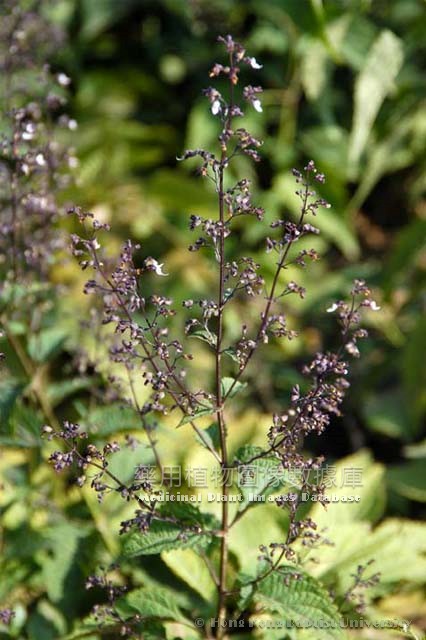|
Rabdosia japonica (Burm. F.) Hara var. glaucocalyx (Maxim.) Hara

|
English Name |
Japonica Isodon, |
|
Latin name |
Rabdosia japonica (Burm. F.) Hara var. glaucocalyx (Maxim.) Hara |
|
Family & Genus |
Lamiaceae, Rabdosia |
|
Description |
Perennial herb, stem height 1.5m. The lower part of the stem puberulous, the upper part nearly glabrous. Leaves opposite; petiole length 0.5-3cm; leaf blade ovate or broadly ovate, 6.5-13cm long, puberulous on both sides along veins. cymes with stalks, flowers 3-5, composed sparse, terminal panicles; bracts and bracteoles ovate, puberulent; calyx tube campanulate, ca. 1.5mm long, outside grey ghost pubescent and glandular dots, calyx teeth 5, shorter than calyx tube, two lip-shaped more or less, upper lip 3 teeth, the middle tooth a little smaller, lower lip 2 teeth, longer, enlarged when fruiting, up to 3mm long; corolla white, 5.5mm long, near the base of corolla tube shallowly saccate above, the upper lip 4 equally cleft, lower lip navicular; stamens and style straightly extended outside of corolla. Nutlets broadly obovate, apex glabrous. |
|
Distribution |
Growing in valleys, under forests, or in tussock. Distributed in Northeast China, Hebei, Shanxi, Shandong and etc. |
|
Part Used |
Medical part: whole plant. Chinese name: Daogenyesu. |
|
Harvest & Processing |
Harvested in summer and autumn, washed, chopped into segments, and sun-dried. |
|
Chemistry |
Leaves contain glaucocalyxin A, B, β-sitosterol, ursolic acid and glaucocalyxin C. |
|
Properties & Actions |
Taste bitter; cool in nature.Tonifying the stomach for dispersing food and clearing heat-toxin. |
|
Indications & Usage |
Gastric and abdominal swelling pain, dyspeptic retention and anorexia, jaundice, cold and pyrexia, mammary abscess, bites by snakes and insects.Oral administration: decocting, 10-15g. External application: appropriate amount, smashed for applying. |
|

